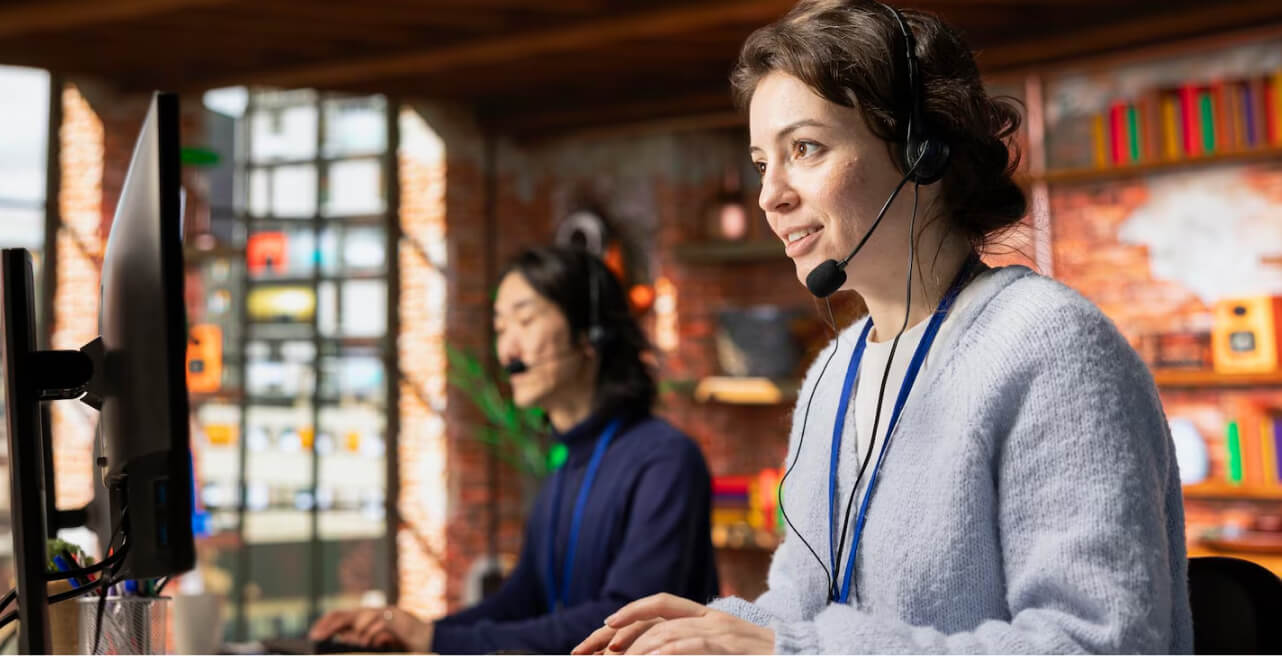Introduction
For years, global e-commerce revolved around efficiency: faster shipping times, competitive pricing, and vast delivery networks. These remain critical pillars of success, but in today’s hyper-competitive environment, they’re no longer enough to build true loyalty. Instead, the defining battleground has shifted to customer experience (CX).
Customer experience spans every stage of the journey—from the moment a buyer lands on a website to the support they receive long after their package has arrived. A smooth, personalized, and trustworthy experience is what keeps customers from switching to competitors who may offer nearly identical products at similar prices.
The stakes are high. The global e-commerce market is projected to surpass $7 trillion by 2025, meaning more players are competing for the same customers. With products increasingly commoditized, CX has emerged as the ultimate differentiator. Brands that fail to prioritize it risk treating fulfillment as the “finish line,” when in reality, delivery is just the beginning of the customer relationship.
This article explores why CX is central to global e-commerce today, what drives rising expectations, and how businesses can adapt to stay ahead.
The Shift from Products to Experiences
E-commerce has fundamentally democratized access to products. No matter where a customer lives, they can now browse dozens of online platforms and find nearly identical goods offered at comparable price points. This abundance of choice has shifted the decision-making process. The key question for buyers is no longer “Who sells this product?” but rather “Which brand makes the buying process easiest, most reliable, and most enjoyable?”
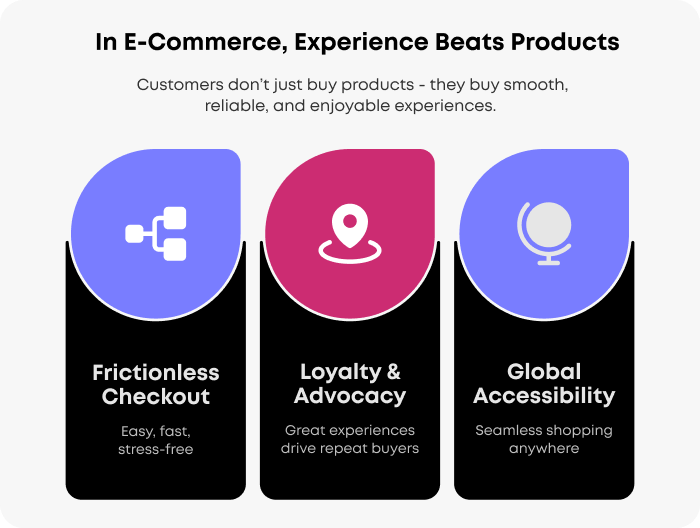
Global giants like Amazon, Alibaba, and Shopee have redefined expectations by building ecosystems where shopping feels seamless—combining intuitive interfaces, one-click checkouts, reliable delivery, and personalized recommendations. Because of this, businesses today cannot rely on products alone to differentiate themselves. Instead, they must compete on the entire end-to-end experience they deliver to customers.
Research reinforces this reality. A PwC survey found that 73% of consumers consider customer experience a critical factor in their purchasing decisions. Yet, the same study revealed that only 49% of U.S. consumers believe companies deliver consistently good experiences. This gap highlights a significant opportunity for businesses willing to prioritize CX.
Key Points:
- Products are becoming increasingly commoditized, making experience the true differentiator.
- Customers actively reward brands that reduce friction—from smooth checkout processes to hassle-free returns.
- A positive experience drives loyalty, leading not only to repeat purchases but also to powerful word-of-mouth advocacy.
Why It Matters:
Products can often be replicated, but experiences cannot be copied as easily. As global supply chains expand and competitors flood the market, customers will increasingly gravitate toward brands that provide trust, convenience, and personalization. These factors create lasting emotional connections that outlive price wars and product imitation, giving companies a sustainable edge in cross-border e-commerce.
Transparency Builds Trust
In today’s always-connected digital world, uncertainty is one of the biggest threats to customer loyalty. When buyers click “purchase,” they don’t want to be left guessing about the status of their order. Instead, they expect real-time visibility and proactive communication throughout the entire shopping journey.
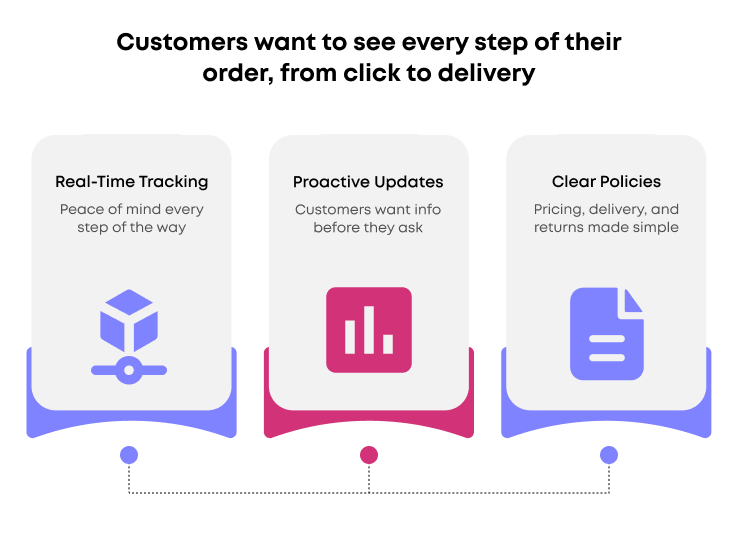
This expectation is reshaping how fulfillment is approached. A survey by Convey found that 98% of consumers say delivery directly affects brand loyalty, with a lack of transparency ranking among the top sources of frustration. As a result, features like real-time tracking, clear return policies, and proactive notifications are no longer optional extras—they are considered baseline expectations by today’s shoppers.
Key Points:
- Real-time tracking has become an industry standard, giving customers peace of mind.
- Customers increasingly expect proactive updates rather than reactive responses when issues arise.
- Transparent policies regarding pricing, delivery timelines, and returns significantly reduce frustration and enhance trust.
Why It Matters:
A lack of visibility is one of the primary drivers of dissatisfaction in e-commerce. Customers want to know not just when their order will arrive, but where it is at every step. Brands that provide this level of transparency create confidence and reassurance, fostering repeat purchases and long-term loyalty. Conversely, companies that fail to offer clear visibility risk losing trust and repeat buyers, even if the product itself is high quality.
Localized Service Across Borders
Going global means more than just shipping products internationally—it requires adapting to the diverse expectations of consumers across regions. Strategies and practices that succeed in one market can easily backfire in another. Elements like payment methods, communication channels, and cultural nuances all play a pivotal role in shaping the overall customer experience (CX).

For instance, in Asia, mobile wallets account for over 50% of e-commerce transactions, reflecting a strong preference for digital payments. In contrast, cash-on-delivery remains the dominant payment method in many Latin American markets, as highlighted in the Worldpay Global Payments Report. Similarly, the channels customers use to interact with brands vary widely: European buyers often favor email or live chat, while WhatsApp dominates customer engagement in parts of Africa and Asia. Brands that fail to account for these differences risk coming across as “out of touch”, frustrating potential buyers and undermining trust.
Key Points:
- Payment methods differ by region (digital wallets in Asia, cash-on-delivery in LATAM).
- Customer communication channels vary (chat and email in Europe, WhatsApp in Africa and Asia).
- Language and cultural differences can create friction if not addressed effectively.
Why It Matters:
Expanding into international markets is not just about managing logistics—it’s about aligning with local habits, preferences, and expectations. True localization fosters trust, comfort, and loyalty, showing customers that a brand understands and values their unique needs. Conversely, neglecting these differences can create unnecessary friction, reduce conversions, and damage the brand’s reputation in new markets.
Post-Sales Support as a Growth Driver
The moment of purchase marks only the beginning of a customer relationship. While the initial sale is important, buyers often form their strongest opinions about a brand during post-sales interactions. Experiences with returns, exchanges, refunds, and problem resolution reveal whether a company truly values its customers—or merely treats them as transactions.
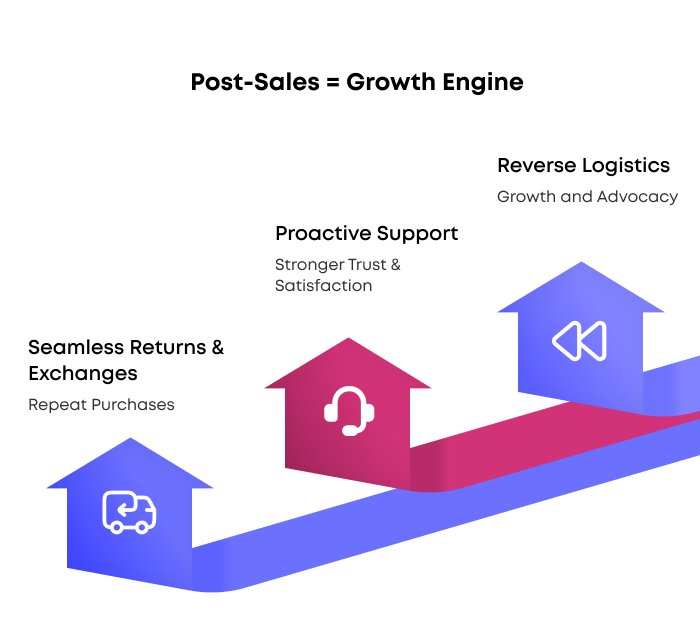
According to Narvar research, 96% of customers are likely to shop again with a retailer if they have a positive return experience. On the other hand, poor post-sales service is one of the quickest ways to lose a customer permanently. As a result, reverse logistics, once a behind-the-scenes aspect of supply chains is now a critical driver of growth, influencing both customer loyalty and brand reputation.
Key Points:
- Returns and exchanges often reflect the true quality of service a brand provides.
- Inadequate post-sales support directly drives customer churn.
- Reverse logistics is becoming an integral part of modern e-commerce operations, ensuring smooth and efficient post-purchase experiences.
Why It Matters:
Acquiring a new customer is significantly more expensive, 5–25 times more, than retaining an existing one. Therefore, the real challenge in e-commerce is not just winning the first sale, but ensuring a seamless experience that secures repeat purchases. Companies that invest in effective post-sales service cultivate trust, encourage loyalty, and turn one-time buyers into long-term advocates.
Personalization as the New Standard
Generic shopping experiences no longer meet customer expectations. Today’s consumers expect brands to recognize them, anticipate their needs, and deliver tailored experiences at every touchpoint. According to McKinsey, 71% of consumers expect personalized interactions, while 76% express frustration when personalization is lacking.
Customers don't want to be generic. They want to be seen, understood, and valued.
Personalization goes far beyond simple product recommendations. It encompasses marketing messages, loyalty programs, website content, and even regional adjustments such as local holidays, seasonal trends, and shopping habits. For instance, a consumer in Japan might respond better to campaigns aligned with Golden Week, while a shopper in the U.S. may expect Black Friday deals. When executed effectively, personalization transforms casual buyers into loyal, repeat customers and brand advocates.
Key Points:
- Personalized product recommendations significantly boost conversion rates by offering relevant options at the right moment.
- Tailored loyalty programs increase engagement, incentivize repeat purchases, and make customers feel genuinely valued.
- Regional and cultural personalization—including holidays, local language, and shopping behaviors—enhances trust and strengthens the brand-customer relationship.
- Cross-channel personalization ensures consistent, relevant experiences across email, social media, app notifications, and in-store interactions.
Why It Matters:
Customer experience is no longer one-size-fits-all. AI-driven personalization enables brands to tailor every interaction, making customers feel understood and appreciated. This not only increases satisfaction and loyalty but also drives measurable business outcomes, including higher retention rates, larger average order values, and stronger word-of-mouth advocacy.
Technology as an Enabler of Experience
Behind every seamless customer experience (CX) lies a robust technological foundation. In today’s digital-first world, customers expect interactions that are fast, accurate, and consistent, no matter where they are. Technology—from AI-powered chatbots to IoT-enabled delivery tracking systems—ensures that these expectations are met, creating smoother journeys and stronger trust.

Customer Relationship Management (CRM) systems play a pivotal role by unifying data from multiple channels, providing businesses with a 360° view of each customer. This allows for tailored communication, personalized offers, and proactive support. Meanwhile, IoT sensors give real-time updates on shipments and inventory, enabling businesses to anticipate delays, optimize stock allocation, and provide accurate delivery timelines. Automation tools streamline repetitive tasks, including order processing, returns, and customer notifications, reducing errors and freeing teams to focus on higher-value tasks.
Combined, these technologies don’t just support CX—they enable it to scale globally. By ensuring that interactions are seamless across multiple touchpoints, companies can maintain high standards of service even as they expand into new markets.
Key Points:
- CRM systems centralize customer interactions across channels, enabling personalization and faster response times.
- IoT technology provides real-time visibility into deliveries and inventory, helping prevent bottlenecks and delays.
- Automation reduces errors in repetitive processes like order management, returns, and notifications.
- AI and analytics empower predictive insights, allowing businesses to anticipate customer needs and optimize operations.
Why It Matters:
Customer experience doesn’t happen by chance. It requires a technology-driven backbone that ensures speed, personalization, transparency, and reliability at scale. Without this infrastructure, even the best CX strategies will struggle to maintain quality, particularly in global operations where volume, complexity, and regional differences can quickly overwhelm manual processes.
The Future of CX in Global E-Commerce
Customer expectations are never static—they evolve as technology, trends, and societal values advance. What feels revolutionary today, such as real-time tracking or personalized recommendations, can quickly become a baseline expectation tomorrow. Forward-looking brands must anticipate these shifts to stay ahead in delivering exceptional customer experiences (CX).
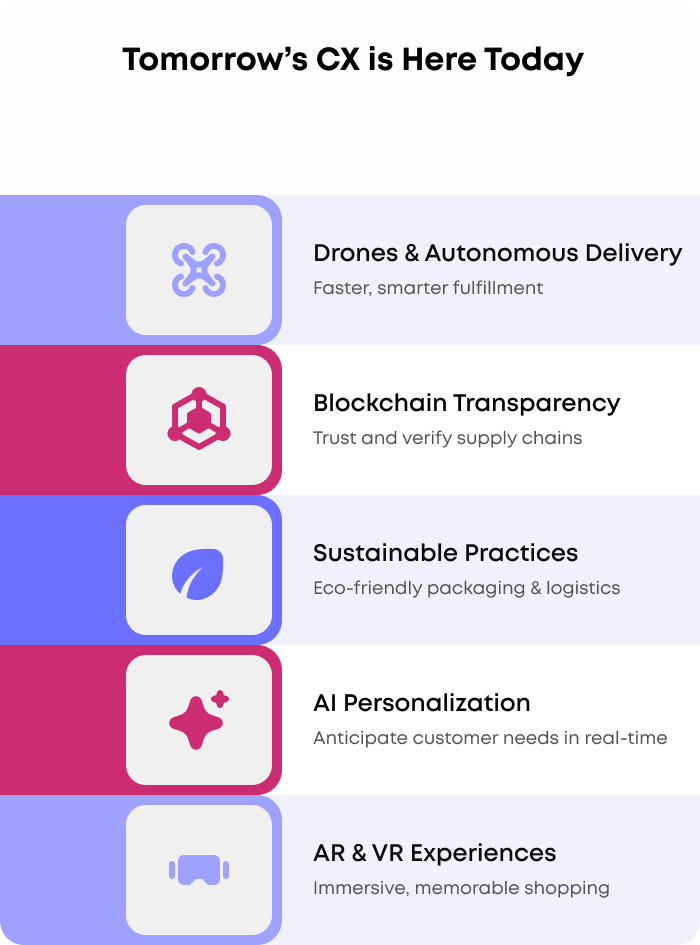
Looking toward the future, CX will be shaped by hyper-personalization, faster and greener fulfillment, and immersive, technology-driven shopping experiences.According to McKinsey, up to 30% of last-mile deliveries in urban areas could be handled by drones or autonomous vehicles by 2030, drastically reducing delivery times and operational costs. At the same time, AI-driven predictive analytics will enable real-time personalization, allowing brands to anticipate customer needs before they even arise—from recommending products to proactively adjusting shipping options.
Blockchain technology will introduce new levels of transparency and trust to supply chains, allowing consumers to verify product origins, track sustainability claims, and ensure ethical practices. Meanwhile, sustainability will no longer be optional. Customers increasingly expect brands to align with their values, including eco-friendly packaging, energy-efficient fulfillment, and carbon-conscious logistics.
Key Points:
- Drones and autonomous vehicles will redefine last-mile delivery, speeding up fulfillment and enhancing convenience.
- AI-powered personalization will anticipate consumer needs in real-time, improving engagement and conversion.
- Blockchain will bring transparency and trust to supply chains.
- Sustainability will shift from a “nice-to-have” feature to a baseline expectation, influencing purchase decisions.
- Immersive technologies such as AR and VR will create engaging, memorable shopping experiences, connecting digital and physical worlds.
Why It Matters:
The future of CX raises the bar significantly. Brands that embrace faster, greener delivery, hyper-personalized loyalty, AI-driven engagement, and immersive experiences will lead the global e-commerce race. Those that fail to evolve risk falling behind, as consumers increasingly gravitate toward companies that combine convenience, trust, sustainability, and personalization. Staying ahead isn’t just competitive—it’s essential for long-term growth and global relevance.
Conclusion
Global e-commerce today is no longer simply a race to offer the lowest prices or the fastest shipping. Success is increasingly determined by the level of customer trust, loyalty, and overall satisfaction that a brand can generate. Companies that view fulfillment merely as the final step in a transaction risk stagnation, losing repeat business to competitors who see every interaction, including delivery, as an opportunity to strengthen the relationship.
To thrive in this environment, businesses must treat logistics as a strategic touchpoint rather than a back-office function. By emphasizing transparency, proactive communication, and clear return policies, brands build confidence with buyers. Localization, from payment methods and language to culturally appropriate messaging, ensures that customers feel understood, no matter where they are. Equally critical is post-sales service: efficient returns, quick exchanges, and responsive support convert a single transaction into ongoing loyalty. Layering personalization and technology-enabled scalability, such as AI-driven order management and real-time shipment tracking, turns logistics from a cost center into a customer loyalty engine, creating meaningful touchpoints that strengthen the overall brand experience.
Filuet, with its extensive expertise in e-commerce operations across 11+ active markets, demonstrates how end-to-end management combined with localized strategies can elevate logistics from a functional necessity into a source of lasting customer relationships. Their approach shows that when fulfillment is integrated with a broader CX strategy, it becomes a key driver of repeat purchases, brand advocacy, and long-term growth in competitive global markets.
.webp)
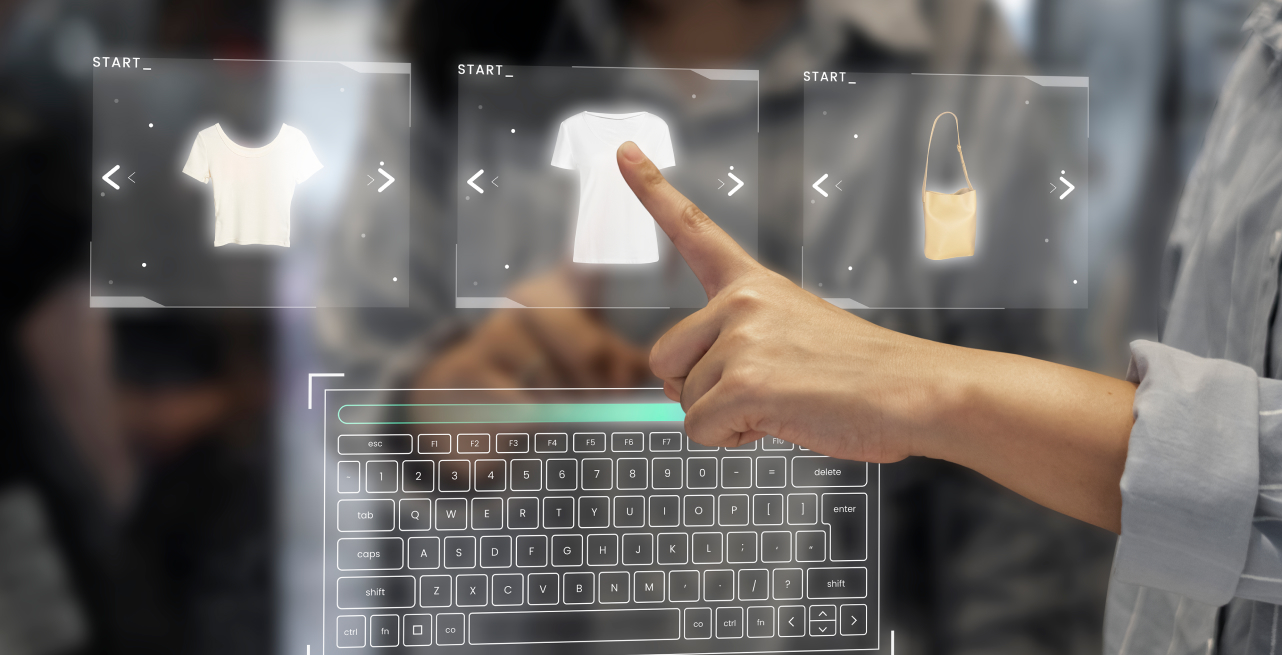


.webp)
